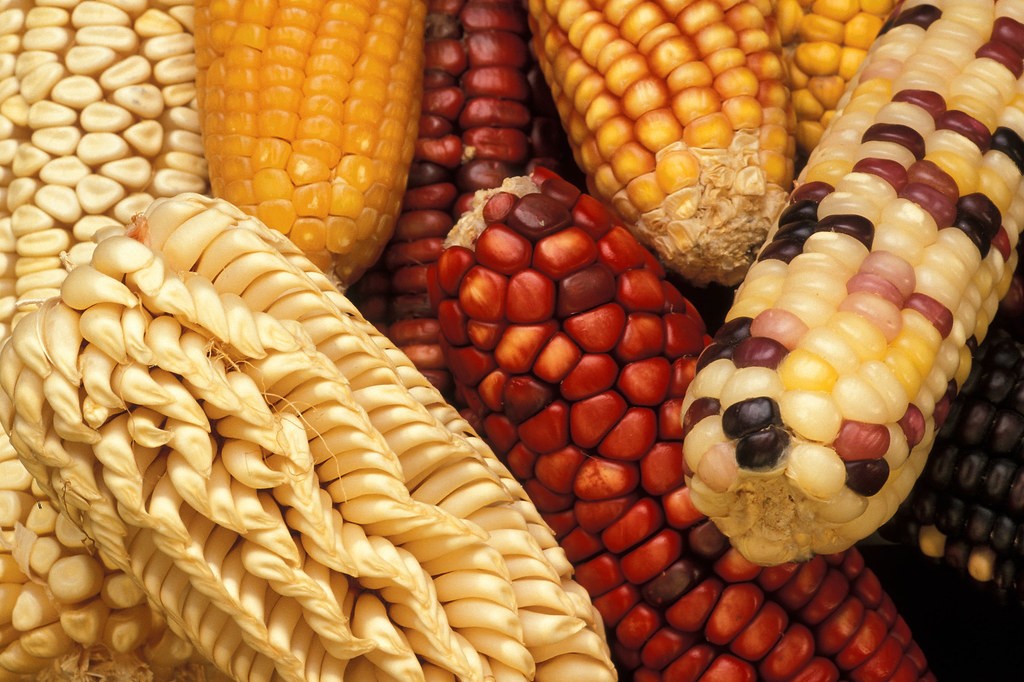Genetic diversity of corn

Students in ACES 399 “Vision 2050 – Grand Challenges of the Millenium” were asked to watch three videos about a topic of their own choosing, and write a blog post reflecting on the topic. The Voices of ACES blog will feature several of those blog posts in the next weeks.
As an aspiring corn breeder, a topic I am aware of from both an academic and private business perspective is that of genetic diversity in corn. The genetic diversity of corn is similar to biodiversity activist Cary Fowler’s description of the diversity of bean varieties and the effective diversity of what farmers plant.
The total and effective diversity of corn is discussed by Jim Holland, professor at USDA-ARS and NC State University. He describes the ongoing effort to identify and increase valuable diversity from exotic germplasm sources that can then be introduced into the narrow base of adapted germplasm utilized by the seed corn industry.
Mark Mikel, associate director of the Roy J. Carver Biotechnology Center at U of I, gives a presentation on progenitor lines of the modern seed corn industry that helps paint a picture of the effective diversity of corn in breeding programs found in the United States.
Inbred corn lines from the Non-Stiff Stalk heterotic group from the breeding programs of Monsanto and Pioneer both trace largely back to just four lines. Two of these four lines are closely related with 3IIH6, being approximately three eighths of PH207 (listed as just “207”in Mikel’s presentation). The same story holds true for the second heterotic group used in creating hybrids, the Stiff Stalks. The modern composition of the Stiff Stalk heterotic group from both Monsanto and Pioneer’s breeding programs can largely be traced back to just 5 lines.
A program that I have had some exposure to is that of Germplasm Enhancement of Maize (GEM). GEM is a public/private partnership from many companies in the seed corn industry along with the USDA-ARS and Iowa State University. GEM takes inbred lines from its private collaborators and introgresses exotic germplasm. This creates adapted lines to the United States that have additional genetic diversity from the exotic germplasm sources.
I have seen the value of the GEM program firsthand from my experience working in a breeding program of a private business. As a part of my endeavors to become a corn breeder, I plan on taking advantage of greater genetic diversity within my breeding program through the use of exotic germplasm, such as that from GEM, so that I have proven elite germplasm along with the potential for significant genetic gain.